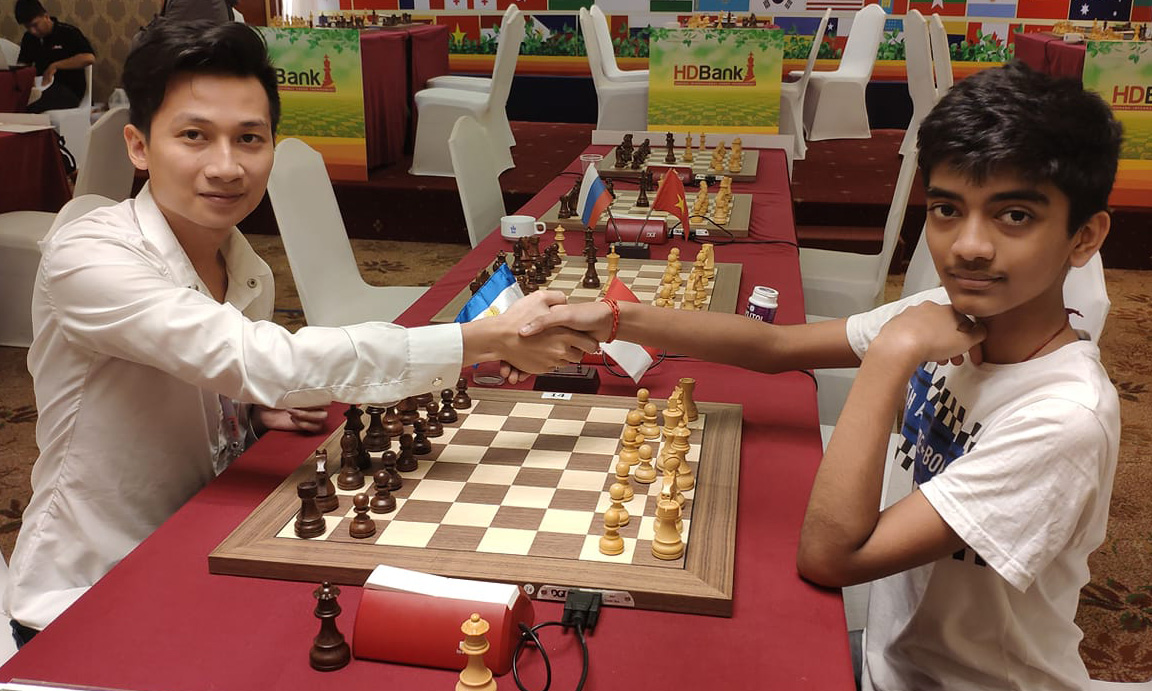The Halloween Gambit is one of the most surprising—and controversial—opening ideas in all of chess. It begins from the quiet and classical Four Knights Game, an opening usually associated with calm development and symmetrical play. But in the Halloween Gambit, White suddenly throws caution aside, sacrifices a knight on move four, and tries to chase Black’s pieces back while grabbing a huge pawn center.
The result? Total chaos on the board.
Even though strong theory says the gambit is dubious, it remains extremely dangerous at the club level and is a popular surprise weapon in blitz. This educational guide will help you understand the ideas behind the Halloween Gambit, why it works in practice, how Black should defend, and what instructive games reveal about the opening’s strengths and weaknesses.
1. The Starting Moves and Basic Idea
The Halloween Gambit begins with:
- e4 e5
- Nf3 Nc6
- Nc3 Nf6
- Nxe5?!
Here White simply gives up a knight for Black’s e5-pawn.
This move shocked players even in the 1800s. According to historical sources, Leipzig club players were winning games with this gambit as early as 1888. However, the name “Halloween Gambit” was coined much later by Steffen Jakob, a German player and programmer. Jakob joked that opponents expecting a calm Four Knights Game were suddenly “frightened as if by a Halloween mask” when their opponent sacrificed a knight on move four.
So what does White get for this bold sacrifice?
- Huge central space advantage
- A lead in development
- Chances to push Black’s knights backward
- Attacking opportunities against Black’s king
White’s next move is almost always:
- d4
This thrust claims the entire center and opens lines for the dark-squared bishop and the queen. From here, Black must decide how to handle the knight on e5.
2. Black’s Two Main Retreats: 5…Ng6 and 5…Nc6
After 5.d4, Black’s knight on e5 is attacked. The two serious retreats are:
A. 5…Ng6
This move keeps the knight active but leads to White gaining even more space.
Typical continuation:
- e5 Ng8
- Bc4
Black’s knight on f6 gets chased all the way back to g8, its starting square. White’s pieces, meanwhile, fly into the game with tempo. Former world champion Max Euwe recommended a defensive setup with …d5 and …c6, arguing that Black can take over if they defend precisely. Grandmaster Larry Kaufman, however, warns that 5…Ng6 is unnecessarily risky, especially for beginners.
Another idea for Black is the active and logical:
- e5 Bb4!
This line, suggested by Eric Schiller, avoids retreating the knight and gives Black pressure in the center.
B. 5…Nc6
This is the more popular and safer retreat. White continues:
- d5
Now Black may choose the main line with 6…Ne5 or Piński’s move 6…Bb4, a theoretically strong counter.
3. The Main Line: 6…Ne5 7.f4 Ng6 8.e5 Ng8
This is the most famous version of the Halloween Gambit. Note what has happened:
- White has chased both Black knights backward.
- Black’s king-side is undeveloped and cramped.
- White has a dangerous pawn trio on d5, e5, and f4.
Then comes the signature attacking idea:
- d6 cxd6 10.exd6
White gets a powerful passed pawn on d6, threatening ideas like Nb5–c7, checks on the e-file, and kingside attacks. The position is extremely unpleasant for an unprepared player.
Engine evaluations often say Black is still better, but humans frequently fail to find careful defensive moves. That’s why the Halloween Gambit has scored many beautiful miniatures at club level.
4. Piński’s Refutation Attempt: 6…Bb4!
International Master Jan Piński analyzed a sharp line in which Black counterattacks immediately:
- e4 e5
- Nf3 Nc6
- Nc3 Nf6
- Nxe5 Nxe5
- d4 Nc6
- d5 Bb4!
Piński’s analysis suggests that White ends up in big trouble if they grab material greedily. For example:
- dxc6 Nxe4
- Qd4 Qe7
In some lines, White’s king remains in the center, their pieces become uncoordinated, and Black gets a strong initiative.
After 9.Be3 0-0 10.Bd3 Nxc3 11.bxc3 Bd6 12.cxb7 Bxb7 13.0-0 Rfe8 14.Rab1 Bc6,
White has no compensation for his poor pawn structure.
Grandmaster Larry Kaufman has also pointed to Piński’s variation as one of the reasons the Halloween Gambit is considered objectively unsound.
5. Sample Tactical Themes and Famous Miniatures
Because the Halloween Gambit creates such unbalanced positions, tactics explode all over the board. Many games end in under 20 moves.
A few common themes include:
● Windmill attacks
White’s knights and bishops sometimes combine for repeated checks, gaining material each time. One educational example features White giving a series of checks with Nc7+ and Nxa8+, picking off pawns and rooks while Black’s king helplessly shuffles between squares.
● The d6 steamroller
The pawn on d6 is often the soul of White’s compensation. Black must prevent:
- Nd5–c7 forks
- Qe2+ followed by Be7 or moves exposing Black’s king
- Tactical threats along the e-file
If Black fails, the position collapses quickly.
● Knight traps
Black’s knight on g6 often has limited mobility. Similarly, White’s knight on a8 (after a windmill sequence) may become trapped later, but not before doing massive damage.
● Open king positions
One side—often Black—loses the right to castle early. When Black plays …Kd8 to defend c7, the game becomes extremely sharp.
6. The Halloween Gambit in Modern Play
Although grandmasters don’t use the Halloween Gambit in classical games, it does appear in blitz and rapid chess, where practical chances matter more than objective truth.
A well-known example is Maxime Vachier-Lagrave, who used the gambit successfully in a Chess.com game. Several superhuman computer engines, including Winter and Rubi, have also beaten each other with it in the Computer Chess Championship, proving that even perfect machines can struggle in messy positions under time control.
Why does it work in blitz?
- The position is unfamiliar.
- The center opens rapidly.
- Black has many ways to go wrong.
- Knights getting chased backward feels uncomfortable.
And most importantly: when the clock is ticking, defending accurately is much harder than attacking with a big pawn center.
7. How Black Should Defend (Practical Tips)
If you face the Halloween Gambit, here are key defensive ideas to remember:
Tip 1: Don’t panic
You are a piece up. You only need to survive the center storm.
Tip 2: Put a queen on f6 early
Moves like …Qf6 neutralize threats like Qe2+. They also discourage White from advancing their kingside pawns recklessly.
Tip 3: Consider returning material at the right moment
Sometimes giving back the extra knight or the exchange improves Black’s position dramatically. This is a common defensive technique in sharp gambits.
Tip 4: Use dark-squared control
Black’s bishop on c5 or d6 can become an important piece, especially if White weakens their dark squares with moves like g3.
Tip 5: Know the Piński line (the most important Line)
6…Bb4 is one of the most reliable answers for Black, especially if you prefer active counterplay.
8. Should You Play the Halloween Gambit?
Play it if:
- You enjoy tactical chaos
- You play a lot of blitz
- You like surprising opponents
- You’re okay with objectively unsound but practically dangerous openings
Avoid it if:
- You prefer long-term positional advantages
- You play serious classical tournaments
- Your opponents know theory well
The Halloween Gambit is best understood as a fun and dangerous surprise weapon, not a foundation for a full opening repertoire.
FAQ: Halloween Gambit Trap, Key Moves & Refutation
1. What is the Halloween Gambit in chess?
The Halloween Gambit is an aggressive opening line in the Four Knights Game where White plays 4.Nxe5!?, sacrificing a knight to gain rapid central control and launch a direct attack. It is considered dubious at high levels but extremely dangerous in fast time controls and amateur play.
2. Why is it called the “Halloween” Gambit?
The name comes from the idea that White’s bold knight sacrifice is “so scary” that it shocks Black—like a Halloween jump scare. It also fits the spooky theme of suddenly giving up a piece in the opening.
3. What is the main trap in the Halloween Gambit?
The core trap is when Black tries to grab too many pawns or plays passive moves. White’s central pawn push d4 and e5 creates huge space, letting White chase Black’s knights backward and generate quick threats. Many players get hit by tactics on Nb5, Nd6, Qf3, or Qh5.
4. Is the Halloween Gambit sound?
Objectively, no—it’s considered unsound at master level. Engines show Black can fully equalize or even get an advantage with accurate moves. But practically, in blitz or rapid, it has a strong surprise effect and punishes unprepared opponents.
5. How can Black refute the Halloween Gambit?
A clean refutation is based on returning material and developing quickly instead of trying to hold all extra pawns. The most reliable line is:
- 4.Nxe5 Nxe5 5.d4 Ng6 6.e5 Ng8!
followed by d5, c6, and Be7, aiming for solid development and long-term superiority.
6. What are the best moves for White in the Halloween Gambit?
Typical attacking ideas include:
- d4, e5 to chase knights
- Nc3–e4–d6 maneuver
- Qf3, Bc4, Bg5 to increase pressure
- Fast kingside attack if Black plays inaccurately
White’s main goal is time and activity, not material.
7. What rating range does the Halloween Gambit work best in?
It’s most effective for players below 2000 Elo, especially those who rely on pattern recognition rather than deep calculation. In blitz, even strong players can misstep because of the sharp, forcing nature of the position.
8. Can I play the Halloween Gambit in classical chess?
You can, but it’s generally not recommended. Stronger opponents will know the refutation or find it over the board. It is best used in:
- Blitz
- Rapid
- Online games
- Unprepared casual opponents
9. What’s the main strategic idea behind the knight sacrifice?
White gives up a knight to:
- Gain a massive central pawn storm
- Force Black’s knights backward
- Get a lead in development
- Create attacking chances before Black stabilizes
If the attack fizzles, White is simply down a piece.
10. Are there safer alternatives for aggressive players?
Yes, if you want sharp openings without sacrificing a full piece, consider:
- Scotch Gambit
- Danish Gambit
- Evans Gambit
- Fried Liver Attack
- King’s Gambit
These systems offer active play while remaining more theoretically sound.

I’m Xuan Binh, the founder of Attacking Chess, and the Deputy Head of Communications at the Vietnam Chess Federation (VCF). My chess.com and lichess rating is above 2300. Send me a challenge or message via Lichess. Follow me on Twitter (X) or Facebook.






